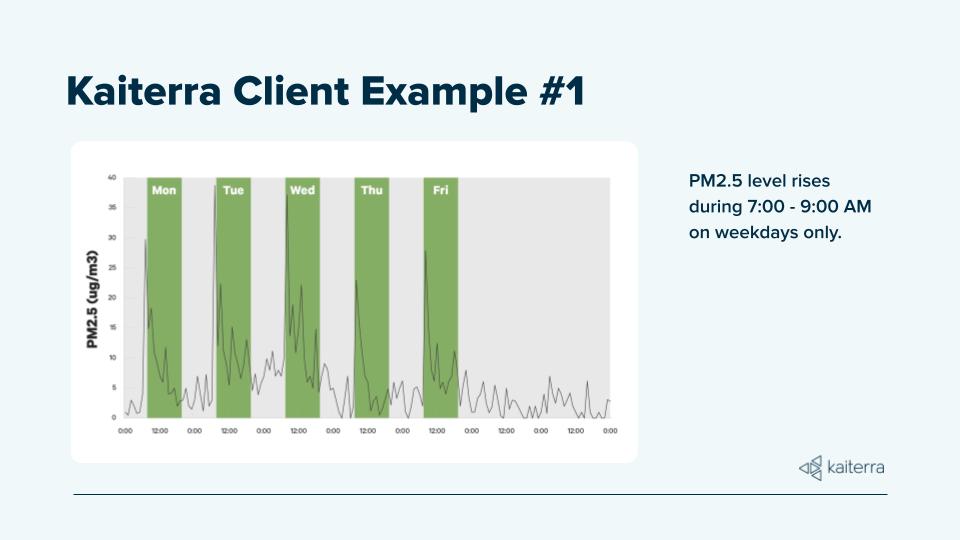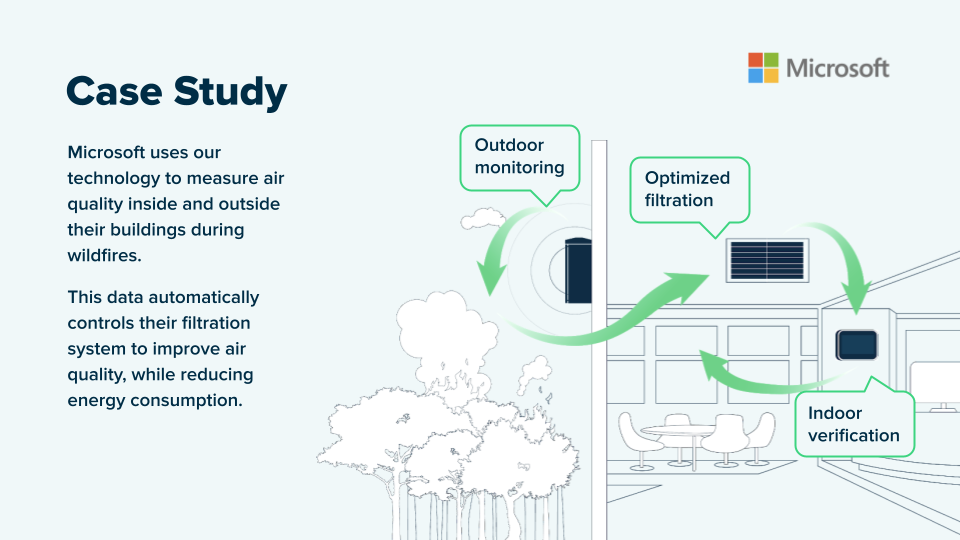Newsletter
If you’ve read some of our previous articles, you’ll know why healthy buildings matter for businesses and the central role indoor air quality plays in designing a healthy building. Convinced that it’s time to act but not sure where to start? We’ve collected a list of common tactics and actionable steps you can take to improve air quality in your facilities - ranging from simple optimizations to longer-term overhauls.
1. Know Your Enemy
The first step towards improving air quality is understanding what makes for poor air quality. These will be the parameters you measure and look to continuously reduce, including:
- Particulate matter - air pollution that can be present both in and outdoors due to smog, cooking, and cigarette smoke
- Volatile organic compounds - chemicals emitted by everyday items such as building material, cleaning products and furniture
- High carbon dioxide levels in crowded and poorly ventilated spaces
- Mold forming due to humidity and plumbing issues
- Radon, dander, and dust mites
Check out our guide to indoor air quality to kickstart your education on common indoor air pollutants.
2. Measure Continuously, Not Sporadically
You need to view indoor air quality as an ongoing process rather than a one-off project with a predefined start and end date. The state of your IAQ can depend on many factors that change over time - from poorly maintained HVAC filters to changes in occupancy rates to worsening outdoor air quality.
We recommend testing air quality continuously rather than relying on spot checks to get actionable data in real-time and to prevent overspending on testing services over the long run. This will also help you notice ‘blind spots’ such as poor air quality in certain areas of the building, or during certain times of the day.

Source: Kaiterra Air Quality Webinar
3. Be Smart About Technology
Continuous monitoring means implementing air quality monitors, but remember that these come in many shapes and sizes. A hidden ‘gotcha’ in many offerings is the need to periodically recalibrate the devices, which might mean sending them back to an overseas manufacturer. We’ve addressed this issue in the modular design of the Sensedge and Sensedge Mini, which allow you to swap out sensors on your own and without relying on external support.
4. Ventilation and DCV
Ventilation is the process of bringing fresh air from the outside into the building. It’s critical for maintaining indoor air quality, as well as ensuring the air doesn’t feel stuffy and overbearing. Since many contemporary office buildings don’t really allow for opening windows, and because air typically needs to be heated, cooled, or dehumidified, offices are often ventilated using HVAC systems.
Tip: Implementing demand-controlled ventilation (DCV) will allow you to reduce energy waste by adapting to occupancy levels in real-time and adjusting HVAC performance accordingly. Read more in our guide to DCV.
5. Maintain Your HVAC Systems and Air Filters
Air filters in HVAC systems are your first line of defense against pollutants, chemicals, and harmful particles. These accumulate dust and become less effective over time, so you need to ensure they’re regularly maintained and cleaned. It’s important to stay proactive rather than rely solely on scheduled maintenance - monitoring indoor air quality can help you understand when there are issues with HVAC performance.
6. Take Outdoor Air Quality Into Account
If ventilation is all about bringing in air from the outdoors, what happens when the outdoor air quality takes an unexpected turn for the worse? As we’ve covered in our recent webinar (watch on-demand here), Microsoft was facing a similar issue in its Seattle office due to seasonal wildfires. By implementing air quality monitors both indoors and outdoors, they could control filtration and ventilation to ensure the building was only drawing in fresh air during periods of low pollution.

7. Keep Clean
Nobody wants to work in a grimy, dirty office, so this really shouldn’t warrant any further explanation; but if you need another good reason to make sure your office is being cleaned properly, you should know that cleaning reduces the levels of mold, dust, allergens and contaminants, which will improve air quality.
8. Control Pollution Sources
The very first recommendation that the EPA provides for improving indoor air quality is to eliminate or reduce emissions from common indoor pollution sources. This can be as simple as adjusting gas stoves, properly storing cleaning agents and disinfectants, or sectioning off office equipment such as printers and photocopiers.
9. Go VOC-free
Building materials and furnishings can also worsen indoor air quality. This isn’t always an easy fix, but you should strive to use green and sustainable materials, and avoid known VOC emitters such as formaldehyde. Of course, it’s much simpler if you can start with greener materials from the get-go by choosing low or no-VOC versions of paints, coatings, and wood treatments.
10. UV Lights and Air Purifiers
Ultraviolet lights and air purifiers can help remove mold and mildew - with purifiers installed inside the ductwork to target the bacteria that can form there and prevent it from contaminating the air inside the office, and lights used to prevent mold from forming in the first place.
11. Automate It!
If you’re ready to take your indoor air quality strategy to the next level, look at how you can incorporate air quality data into building automation systems to further cut down your energy costs, reduce the negative environmental impact of your buildings and improve occupant wellness.
Get Buy-in for Improving Indoor Air Quality
As we’ve seen above, there are many smaller and larger investments you can make in indoor air quality to improve the wellness, wellbeing, and satisfaction of building occupants. But first, you need your organization to be on board and willing to devote the resources needed to turn your facilities into healthy buildings. We’ve prepared a handy FREE guide to help you in this task, including:
- Key stats, figures, and the numerous benefits attained through monitoring indoor air quality
- How poor indoor air quality can impact energy costs
- Why building occupants are healthier and more productive when air quality is prioritized
- How increases in commercial real estate value are possible through monitoring indoor air quality






.png?width=200&height=148&name=Menu%20C%20(2).png)

.png?width=307&height=228&name=Menu%20-%20D%20(1).png)
.png)





